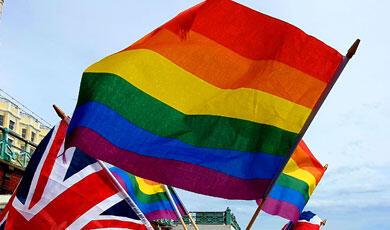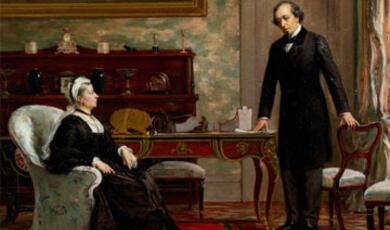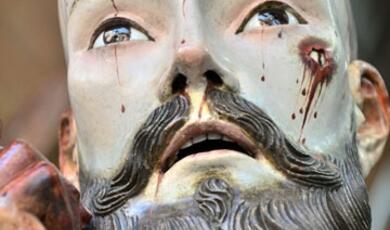The Queen's Commonwealth: Monarchy and the End of Empire, 1945-2011
Share
- Details
- Transcript
- Audio
- Downloads
- Extra Reading
As Glasgow prepares to host the Commonwealth Games, Professor Philip Murphy, Director of the Institute of Commonwealth Studies, explores the history and importance of the Commonwealth and asks, 'What Next?'
Download Transcript
08 July 2014
The Queen’s Commonwealth:
Monarchy and the End of Empire, 1945-2011
Professor Philip Murphy
This lecture draws much of its material from my recent book, Monarchy and the End of Empire: The House of Windsor, the British Government, and the Postwar Commonwealth (Oxford University Press, 2013). This explores the triangular relationship between the British government, the Palace and the Commonwealth in the period after 1945. It has two principal themes: the relationship of the Crown to the ‘Commonwealth Realms’ (where the Queen remains sovereign), and the development of the headship of the Commonwealth.
The background can be stated fairly simply – in the early part of the twentieth century, the British government promoted the Crown as a counterbalance to the centrifugal forces that were drawing the Empire/Commonwealth apart. Even in this respect, however, it increasingly had to accept that the relationship of the Commonwealth realms to the Crown would essentially be bilateral ones. This was implicit in the Balfour Report of 1926, and the Statute of Westminster in 1931. From here, it was a relatively short jump to accepting the notion of a divided Crown, although the British government continued to resist this right up to the 1950s.
Ultimately, with newly-independent India’s determination to become a republic in the late 1940s, the British government had to accept that allegiance to the Crown could no longer be the common factor binding the Commonwealth together. It therefore devised the notion of the headship of the Commonwealth as a means of enabling a republican India to remain in the Commonwealth while continuing to give the monarchy a pivotal symbolic role. The headship, however, eventually took on a life of its own.
The basic argument of the book is that it was not long after 1945 that an increasing number of influential figures within the British government began to regret having created this elaborate constitutional infrastructure. The system of Commonwealth realms was a recipe for confusion and misunderstanding, which policy makers increasingly saw as a liability in terms of the UK’s relations with its former colonies – so much so that by the early 1960s, British ministers were actually bullying African nationalist leaders into adopting republican constitutions on independence.
The headship of the Commonwealth also became something of a headache for UK policy makers, partly because it provided the Palace with a constitutionally dubious job-creation scheme, and partly because it tended to tie the British government to what many UK policy makers came from the 1960s onwards to regard as a troublesome and/or redundant institution.
A nebulous role
The Commonwealth prime ministers’ meeting, which opened on 22 April 1949, seized upon the idea of the King as a symbol of Commonwealth association when seeking to frame the terms under which India would recognise him as Head of the Commonwealth. This was a particularly valuable notion given the determination of the prime minister of South Africa, D F Malan, to avoid any suggestion that the Commonwealth itself was a separate constitutional entity. Malan’s concerns were addressed in two ways. First, the words ‘as such’ were inserted into the final Declaration, so that it spoke of India’s ‘acceptance of the King as the symbol of the free association of its independent member nations and as such Head of the Commonwealth’ [author’s italics]. Secondly it was agreed specifically to put on record that the new title did not imply that the King discharged any constitutional function by virtue of the headship.[1] The question of whether the headship should be hereditary was not even addressed.
So nebulous was the thing that had been created at the London conference of 1949 that as late as the 1969, G A Duggan of the FCO’s Commonwealth Co-ordination Department, admitted to his colleagues that the headship of the Commonwealth ‘in the negative. It involves no constitutional duties, no ties of allegiance by individuals, no obligation to visit and does not find any expression in a formal international context.’[2] The Palace agreed. As the Queen’s private secretary, Michael Adeane, noted in September 1959, ‘No constitutional function was attached to it [at the time of the London declaration] and none can belong to it now because no Head of the Commonwealth could act in a commonwealth [sic] sense without constitutional advisers and no such commonwealth advisers exist.’[3] Adeane’s remark touched on perhaps the central constitutional issue surrounding the headship of the Commonwealth. The defining feature of a constitutional monarchy is that, except in very limited circumstances, the sovereign only acts in a political capacity on the advice of their ministers. This both ensures that policy is determined by elected representatives and shields the monarch from political criticism. Yet there were no ministers capable of advising the monarch on a Commonwealth-wide basis. Furthermore, at least in the years immediately after the London Declaration, some of the Queen’s prime ministers were keen that as head of the Commonwealth she should do nothing to suggest that the Commonwealth itself was a constitutional entity in its own right. As such, when in 1957 it was suggested that she might address the United Nations in her capacity as head of the Commonwealth, the South African government objected and the idea was dropped.[4] Indeed, it was not until 1997 that the Queen was given a formal role in the biennial Commonwealth heads of government meetings (CHOGMs).
Making the headship a reality
Despite the minimalist way in which the headship was originally conceived, and the care with which some Commonwealth members policed this conception, the role has been given substance over the decades through a series of regular commitments on the part of the Queen which have served to demonstrate her belief in the organisation. These include her Christmas and Commonwealth Day messages and her support for events such as the Commonwealth Games and the Commonwealth Day Multi-Faith Service.
In terms of the Commonwealth Games for example, the Queen will officially open the Glasgow Games later this month. She performed the opening for the first time in 1978, and made a point of attending all the games from 1970 to 2006 (her absence from the Delhi Games in 2010 provoked some criticism from the Indian press). 1958 saw the introduction of the ‘Queen’s Relay’: a baton containing a message from the Queen is conveyed by relay runners to the venue of the next games, where the address is read at the opening ceremony by the Queen or her representative.
The increasing de facto ceremonial role assumed by the head of the Commonwealth was probably encouraged by the creation in 1965 of the Commonwealth Secretariat. If a concern of the Palace had been that the Queen lacked anyone capable of advising her ‘in a Commonwealth sense’ she arguably obtained such an advisor in the form of the Commonwealth Secretary-General. The first Secretary General, Arnold Smith, certainly hinted in his memoirs that the Palace encouraged him to assume that role. He claimed that during his first few weeks in the post, ‘members of the Royal Family made what was clearly a concerted effort to give us a welcome and to impress upon Whitehall that I was to be considered one of the Queen’s advisers’. Yet ‘a few Whitehall officials needed some Royal prodding before they accepted the Commonwealth Secretary-General’s position in the way the Queen saw it.’[5]
One of the most prominent ways in which the Queen gave substance to her role as head of the Commonwealth was through her annual Christmas Day message, a tradition established by her grandfather in 1932. Again, however, this raised the issue of the monarch’s right to speak without ministerial advice. As Edward Heath’s private secretary noted in December 1972 following consultations with the Palace ‘the broadcast is to the whole of the Commonwealth, not just to the Queen’s subjects in this country and that the text of the broadcast is not therefore a matter on which the Queen expects to receive formal advice from the Prime Minister.’[6] Yet as the Palace had ruled in 1957, the British government was, nevertheless responsible for anything the Queen might say in the Christmas broadcast.[7] Recognising that this placed the UK government in a difficult position, the convention arose that ‘as a courtesy’ the message was shown to the British prime minister before it was made public.[8] This courtesy was not, apparently, extended to other Commonwealth governments.
Another highly significant way in which the Queen gave substance to her role as head of the Commonwealth was through being present at heads of government meetings. Although she only obtained a formal role in these meetings in 1997, she had previously made a point of receiving the Commonwealth representatives outside the main sessions and hosting a banquet for them. Before 2013 she had only missed one – the CHOGM in Singapore in January 1971, which her British prime minister Edward Heath had formally advised her not to attend.[9]
The suggestion that the 1977 CHOGM should take place in London to coincide with the Silver Jubilee celebrations was the Queen’s own.[10]She attended the decisive Lusaka CHOGM in 1979, despite concerns about her safety expressed by the prime minister of New Zealand, Robert Muldoon, and endorsed to some extent by Mrs Thatcher.[11]According to most accounts, she played an important part of defusing a row between Mrs Thatcher and African Commonwealth leaders over the future of what was then Zimbabwe-Rhodesia. A contemporary account by her private secretary, Philip Moore, for example, suggests that she made a personal intervention, urging the host of the summit, Kenneth Kaunda of Zambia to tone-down a speech he was due to make at the banquet for the heads of government.[12]
Yet although the 1970s witnessed a largely successful attempt by the Palace to give the headship substance, there remained significant concerns about the creation of too close a relationship between the Crown and the Commonwealth. The abandonment of the monarchy by Malta in 1974 and Trinidad and Tobago in 1976 suggested that republicanism might be gathering a fresh momentum. There were even signs that this trend might be affecting some of the older Commonwealth Realms. In Australia between 1972 and 1975, the Labor Government of Gough Whitlam, appeared determined steadily to chip away at symbolic links to the UK and the Crown, abolishing appeals to the Privy Council and introducing a new honours system and national anthem.[13] The Whitlam’s administration’s subsequent dismissal in November 1975 by the governor-general, Sir John Kerr, drew the monarchy into a major political controversy and energised the Australian republican movement. Meanwhile, Pierre Trudeau’s move to ‘patriate’ the Canadian constitution in 1978 also served to politicise the position of the Crown, drawing accusations from his opponents that in seeking to enhance the status of the governor-general he was pursuing republicanism by stealth.
The idea of holding the 1977 CHOGM in London appears to have been the Queen’s own. At the 1975 meeting, Kenneth Kaunda, president of Zambia, had been keen to offer Lusaka as the venue for the next one. Harold Wilson confessed to Arnold Smith that he was in a difficult position: the Queen had asked him to invite heads to meet in London in 1977 to coincide with the celebrations of her Silver Jubilee. Wilson, however, was reluctant to put in a counter-bid for fear of offending Kaunda. In the event, when Smith explained the situation to Kaunda, he magnanimously agreed to postpone the invitation to 1979.[14] The fact that this was the Queen’s own idea clearly carried great weight. Yet there were obvious dangers in associating the Commonwealth so specifically and publicly with a royal celebration. As Smith himself notes, ‘Closer to the time of [the 1977] Summit, one or two people were concerned that the occasion, merging with the Jubilee celebrations, might be seen like an old-style Durbar.’[15]
Indeed, the Palace added to these fears by pushing for the Queen to play a role in the opening ceremony of the 1977 CHOGM. She had never previously done so. Instead, a message of greeting from the Queen had been read out at opening ceremonies, and heads of government had sent a reply. In July 1975, at a meeting of a Home Office sub-committee dealing with the Silver Jubilee celebrations, her deputy private secretary, Philip Moore, suggested that at the formal opening of the 1977 CHOGM she might offer this welcome in person. The initiative for this appears to have come not from the Queen, but from her private secretary, Martin Charteris.[16]
Smith’s recently-installed successor as Commonwealth secretary-general, Sonny Ramphal, was, unhappy with the idea. He was clearly concerned in more general terms that the CHOGM might be regarded as just another element of the Jubilee celebrations. According to the Foreign Office, he explained that,
The genuine warmth and affection with which the Royal Family were received throughout the Commonwealth tended to obscure for the Palace the real political delicacies which had to be watched in the Commonwealth relationship to-day. There would be much resentment among other Commonwealth Heads of State if the British gave the impression that their presence in London in 1977 was primarily seen as for attendance at Her Majesty’s Jubilee celebrations.[17]
On the question of the Queen attending the opening ceremony, Ramphal made his objections clear:
If it were seen as a special once-only affair connected with the Jubilee, it would have the undesirable connotations he had already spoken of. If it were proposed as a precedent to be followed at other HGM in other countries, he would see even greater political objections to it.
Ramphal’s approach clearly derived not merely from to a desire to avoiding offending the dignity of some other Commonwealth leaders, but also from a concern that the Commonwealth should not be seen as a creature of Britain and its royal family.
Conversely, there is considerable evidence that during the 1970s the FCO was worried that the Queen’s role as Head of the Commonwealth might be vulnerable given the organisation’s increasingly republican and anti-colonial character. When, for example, Trinidad and Tobago became a republic in 1976, no formal requirement was made of it to continue to recognise the Queen as Head of the Commonwealth. The Foreign Office explained to its High Commission that ‘in the contemporary Commonwealth climate we do not wish to give the more racially-minded Commonwealth members any opportunity to question the Queen’s present role.’[18]
Meanwhile, the constitutional basis of the Queen’s Commonwealth role remained a source of controversy. A prominent figure in British politics who kept a particularly persistent and watchful eye on the issue was the maverick right-wing member of parliament J Enoch Powell. When the phrase ‘Head of the Commonwealth’ was incorporated in the 1953 Royal Style and Titles Bill, Powell, then a young Tory back-bencher, had attacked his own government for ‘formally and deliberately’ surrendering the concept of common allegiance to the Crown and replacing it with ‘a fortuitous aggregation of a number of separate entities’.[19] In a notorious series of anonymous articles in The Times in 1964, Powell claimed that a growing number of people in the UK ‘do not like to see the Sovereign whom they regard as their own by every claim of history and sentiment playing an alien part as one of the characters in the Commonwealth charade.’[20] Powell repeatedly questioned the claims by the Palace that there were occasions when, as Head of the Commonwealth, the Queen should be able to act without ministerial advice. He was also alert to instances when, for example, after the second of the two coups in Fiji in 1987, the Palace appeared to be pursuing a policy towards a Commonwealth Realm without advice from ministers of the Realm itself and at odds with the policy of the Queen’s UK ministers. While Powell could be dismissed as pariah figure in British politics, his hostility towards the Commonwealth reflected a broader trend on the British right which identified the organisation with mass immigration and had little sympathy for its opposition to white settler rule in Southern Africa. Following the election to power of the Conservatives under Mrs Thatcher in 1979, there were unmistakable signs that the Queen’s close association with the Commonwealth was creating tensions between the Palace and Downing Street. These tensions came dramatically to public attention in 1986 when against the background of a threatened boycott of the Commonwealth Games in Edinburgh by member states in response to the British government’s policy towards South Africa, the Queen’s press secretary, Michael Shea was accused of briefing against Mrs Thatcher.
The Queen’s Commonwealth? The Strengthening of links with the Crown since the 1990s
One might perhaps have expected the events of the 1990s to have weakened the Queen’s position as Head of the Commonwealth.The decade witnessed a particularly turbulent period in the fortunes of the House of Windsor, with the very public collapse of the marriages of the Prince of Wales and his brother Prince Andrew, controversy about royal finances, and criticism of the Palace’s reaction to the death of Diana Princess of Wales in 1997. The British government decided that the Royal Yacht Britannia, which had come into service in 1954 and had played such an important part in facilitating the Queen’s overseas visits, should not be replaced. When the yacht was finally decommissioned following the 1997 general election, the Queen shed a very public tear. Accident-prone visits India in October 1997 and Malaysia in September 1998 suggested that royal tours of the Commonwealth might be losing some of their magic. Meanwhile the future of the Commonwealth Realms was overshadowed by the impending referendum on a republic in Australia which took place in 1999. In the event, the motion to establish a republic not only failed to secure the necessary majority in at least four of the six Australian states, but was not even backed by the majority of the votes cast.
Paradoxically, however, it was precisely during this troubled decade that the Queen’s ceremonial role as head of the Commonwealth was properly formalised. The Harare CHOGM in 1991 agreed to commission a special Commonwealth Mace to mark the 40th anniversary of the Queen’s accession to the throne in 1992. The Mace, which was designed by the London-based goldsmith, Gerald Benney, is decorated with the royal coat of arms, the Commonwealth symbol and with the enamelled flags of the member states.[21] It is used on occasions when the Queen, or a member of the royal family representing her, is present as Head of the Commonwealth, including the Multi-Faith Observance, and the Commonwealth Day reception at Marlborough House.[22] In a further step, at the Edinburgh CHOGM of 1997, the Commonwealth Secretary General Chief Emeka Anyaoku for the first time gave the Queen a formal role in the meeting’s opening ceremony. The heads of government meeting in Edinburgh also received the report of an Inter-Governmental Group on Criteria for Commonwealth Membership (IGCCM), chaired by New Zealand’s High Commissioner in the UK, John Collinge. This recommended that new applicants for Commonwealth membership should be obliged to acknowledge ‘the role of the British monarch as a symbol of the free association and as such Head of the Commonwealth’.[23] The specific wording of this application would have implied not merely that for the first time applicants would be required to make this formal acknowledgement of the Queen’s role, but that the role itself would automatically pass to the next ‘British monarch’. In the event, this did not appear in the final communiqué of the Edinburgh CHOGM and so the issue remained unresolved. It was only finally settled in 2007. The communiqué of that year’s Kampala CHOGM stipulated that applicants would be formally required ‘to acknowledge Queen Elizabeth II as the head of the Commonwealth’.[24] Although this form of words made no attempt to foreclose the issue of whether the headship was hereditary, it represented a further stage of the incorporation of the headship into the formal structure of the Commonwealth in a way that would have been almost unthinkable 30 years earlier.
A number of factors may have contributed to this apparent divergence between the Commonwealth’s eager embrace of its royal head in the 1990s and the monarchy’s more troubled fortunes in the UK. Firstly, the changing character of the Commonwealth had arguably reduced sensitivities surrounding the role of the monarch. The Commonwealth had firmly established itself as an organization of fully independent states, with many of them adopting foreign policies that were markedly at odds with those of the UK. The process of ‘de-dominionisation’ had culminated in new constitutions in Canada in 1982 and in Australia and New Zealand in 1986, under which the final residual powers of the UK parliament had been removed. As such, the notion that the ‘British’ monarch might play a ceremonial role within the Commonwealth was far less controversial at the end of the twentieth century than it might have been in the middle decades when members were still divided about the extent to which they wished to distance themselves from the former imperial power. The second reason relates – in two quite separate senses - to the political transformation of South Africa in the first half of the 1990s. The African National Congress, which was unbanned in February 1990, went on to win power in the elections of April 1994 under the leadership of Nelson Mandela, and two months later South Africa rejoined the Commonwealth. In 1995, the Queen set the seal on this new relationship with her first visit to South Africa since 1947. There was a widespread perception that, during the years of struggle for majority rule in South Africa, her sympathies on the matter had been closer to those of the majority of Commonwealth leaders than to some of her British Prime Ministers. This, and the close personal relationship which she forged with Mandela from the time of his visit to the Harare CHOGM in 1991 enabled her to share in some of the moral capital that South Africa’s first black president brought to the Commonwealth. Yet if the advent of majority rule in South Africa vindicated the stance that the Commonwealth had taken over many decades it also robbed the organisation of what had been its most prominent campaigning issue. An attempt from the time of the Harare Declaration of 1991 to reinvent the Commonwealth as a vehicle for the promotion of democracy, human rights and the rule of law has gone some way towards filling that void, although the practical results have been distinctly mixed.[25] In this quest for a renewed sense of purpose and identity, the Queen with her uniquely long record of service to the Commonwealth arguably took on an increased importance as a figurehead and point of common reference.
In recent years this tendency to emphasise the link between monarchy and the Commonwealth has become, if anything, more pronounced. The Queen’s Diamond Jubilee year 2012 witnessed a number of examples. The Royal Commonwealth Society, launched its ‘Jubilee Time Capsule’. People from around the Commonwealth had been invited to ‘Share your story with the Queen’. The object was to produce a website with a personal recollection from a Commonwealth citizen for each day of the Queen’s 60 year reign.
In February 2012, on the anniversary of the Queen’s accession, British prime minister David Cameron announced that his government would make a contribution of up to £50 million to the newly-created Queen Elizabeth Diamond Jubilee Trust.[26] The Trust, chaired by the former Prime Minister, Sir John Major and including among its trustees the Commonwealth Secretary-General Kamalesh Sharma, was established to support charitable causes across the Commonwealth organised around six broad themes, one for each decade of the Queen’s reign.
The forging of ever closer ties between the monarchy and the Commonwealth has certainly proved mutually beneficial in recent years. But it runs the risk of the Crown becoming a life-support machine for an organisation that in recent years has appeared to lack much sense of purpose or momentum. The close association also reinforces the impression that the Commonwealth is essentially British led and sponsored, a relic of the imperial past. And the question of whether the headship will be passed to the next British monarch is far from being resolved.
© Professor Philip Murphy, 2014
References
[1] Minutes of Prime Ministers’ Meeting, PMM (49) 4th meeting, 27 April 1949, CAB 133/89.
[2] Minute by Duggan, undated late Oct/early Nov 1969, FCO 68/27.
[3] Adeane to Clutterbuck, 26 Sept 1959. DO 35/5134. This letter was not, in fact, posted, but was presented to Clutterbuck by Adeane in October following a discussion between them.
[4] Adeane to Clutterbuck, 3 Nov 1959. DO 35/5134.
[5] Arnold Smith (with Clyde Sanger), Stitches in Time: The Commonwealth in World Politics (Ontario, General Publishing Co, 1981), 268-9.
[6] Armstrong to Charteris, 4 Dec. 1972, PREM 15/1880.
[7] Halls to Wilson, 16 Oct. 1969, PREM 13/2899.
[8] Minute by Collins, 28 Jan 1971, FCO 68/330.
[9] Hunt to Wilson, 29 March 1974, PREM 16/316.
[10] Smith, pp. 273-4.
[11] See, however, Murphy, Monarchy and the End of Empire, 140, on the strategic considerations behind Mrs Thatcher’s handling of this matter.
[12] Moore to du Boulay, 14 Sept 1979, FCO 105/26
[13] Mark McKenna, The Captive Republic: A History of Republicanism in Australia 1788-1996 (Cambridge, CUP, 1996), 227.
[14] Smith, pp. 273-4.
[15] Smith, p. 274.
[16] Minute by Storar, 16 July 1975, FCO 68/672
[17] Minute by Storar, 16 July 1975, FCO 68/672
[18] Eaton to Paterson, 11 March 1976, FCO 6/143.
[19] Robert Shepherd, Enoch Powell: A biography (London: Random House, 1996), 112.
[20] ‘Patriotism Based on Reality Not on Dreams’, The Times, 2 April 1964.
[21] The Times, 20 Aug 1994.
[22] The Times, 21 July 1994.
[23] Report of the Committee on Commonwealth Membership, September 2007. 2.
[24] Communiqué of the 2007 Commonwealth Heads of Government Meeting, para. 87.
[25] For a recent assessment of the Commonwealth’s record see Kwadwo Afari-Gyan, Asma Jahangir and Tim Sheehy, Democracy in the Commonwealth (Commonwealth Policy Studies Group and Electoral Reform International Services, London, 2009), 56-95.
[26] HC Debs, 6 Feb 2012, Written Ministerial Statement, col. 5WS.08 July 2014
This event was on Tue, 08 Jul 2014
Support Gresham
Gresham College has offered an outstanding education to the public free of charge for over 400 years. Today, Gresham plays an important role in fostering a love of learning and a greater understanding of ourselves and the world around us. Your donation will help to widen our reach and to broaden our audience, allowing more people to benefit from a high-quality education from some of the brightest minds.


 Login
Login











